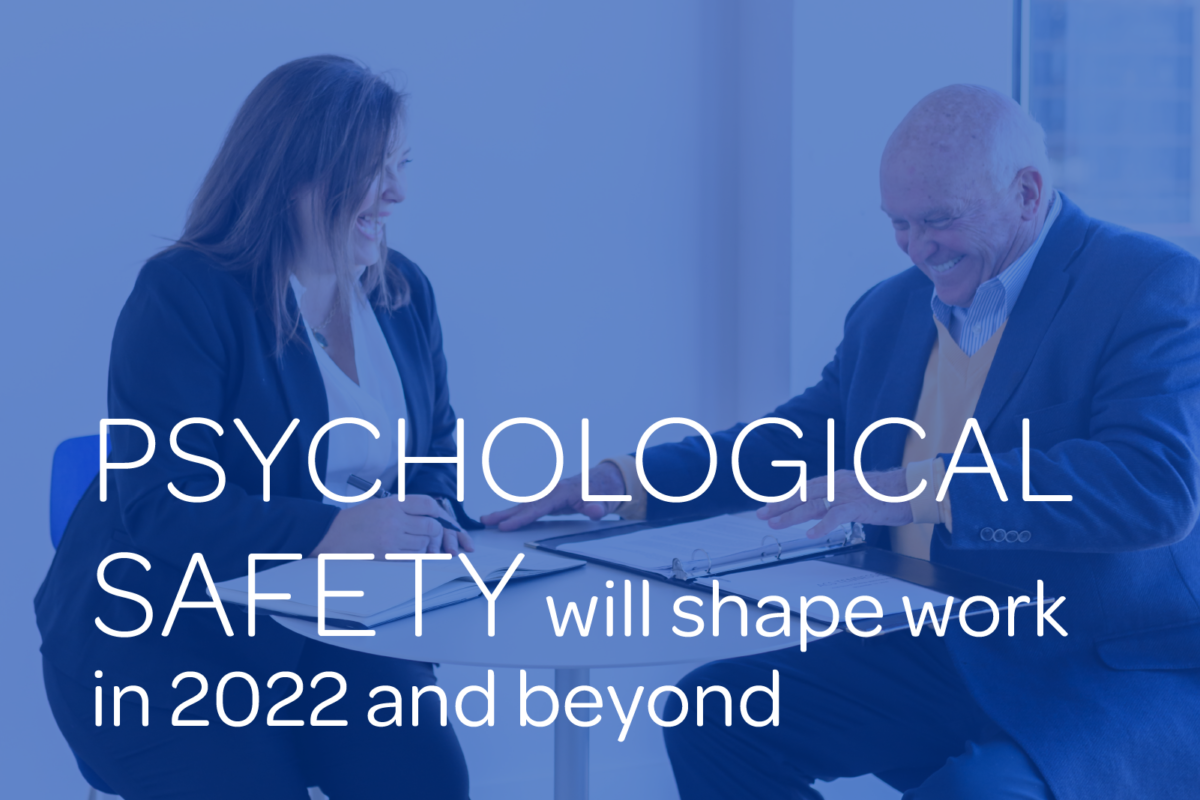In December, I was a panelist in a webinar where, along with two other consultants, we predicted key trends for 2022. My crystal ball is no better than anyone else’s, but in this case, my #1 trend was clear: psychological safety will reign in 2022 – and beyond.
Psychological safety is a concept pioneered by Harvard Business School professor and #1 rated management guru on Thinkers50 in 2021, Amy Edmondson. Her book, Fearless Organization, is a must-read for anyone working with others. She defines psychological safety as the belief that one can be one’s full self at work without fear of punishment or humiliation for speaking up. Further, she argues psychological safety is not about being nice, but rather about high performance. Google’s landmark Project Aristotle bore this notion out when two years of research on 15,000 people identified psychological safety as the most important factor of five in a high performing team. Astonishingly, without psychological safety, none of the other factors matter. In other words, it’s the foundational layer of a Maslow-type hierarchy of needs in the workplace. Of course we’ll be focused on it in 2022.
Understanding psychological safety’s importance and creating a psychologically safe workplace are two different propositions. In working with various teams over the past few months, I’ve noticed three practices highly safe teams share:
- They measure it: As the saying goes, “what gets measured gets managed.” Any given group’s psychological safety index can be measured through the seven question Likert scale Dr. Edmondson includes at the end of her book. By analyzing data, leaders can understand where pockets of psychological safety exist in their organization and learn from best practices. On the flip side, where psychological safety is low, leaders can bring in team coaches to help it increase. Measuring once per quarter ensures leaders understand their psychological safety baseline.
- They prioritize it: By measuring psychological safety, a leader is signaling it’s a priority. That alone isn’t enough, however. Leaders who excel at creating psychologically safe workplaces are intentional about setting high expectations (have you ever felt fulfilled by a job so easy you could do it in your sleep?) while also normalizing failure as part of the experimentation and innovation processes.
- They foster it: I recently facilitated a psychological safety scan for a client whose scores were the highest I have ever seen. On the dimension of “willingness to help,” the score was an astounding 100/100. What, I wondered, accounted for this stellar and highly unusual result? The debrief revealed a practice called “swarming” in which the team has daily standups and reviews everyone’s workload. If someone has a deadline looming, other team members help them meet it. The result? No one is pulling all-nighters, and the team believes profoundly that help is always available.
In a business climate where supply chain disruptions, staffing shortages and unprecedented rancor around opinions on vaccine mandates seem to dominate daily life, it’s increasingly important for leaders to create psychologically safe work environments. Given psychological safety’s proven contributions to high performance, how could it not win 2022?

